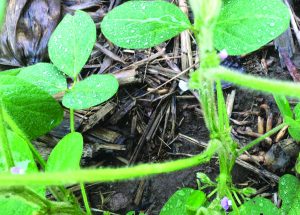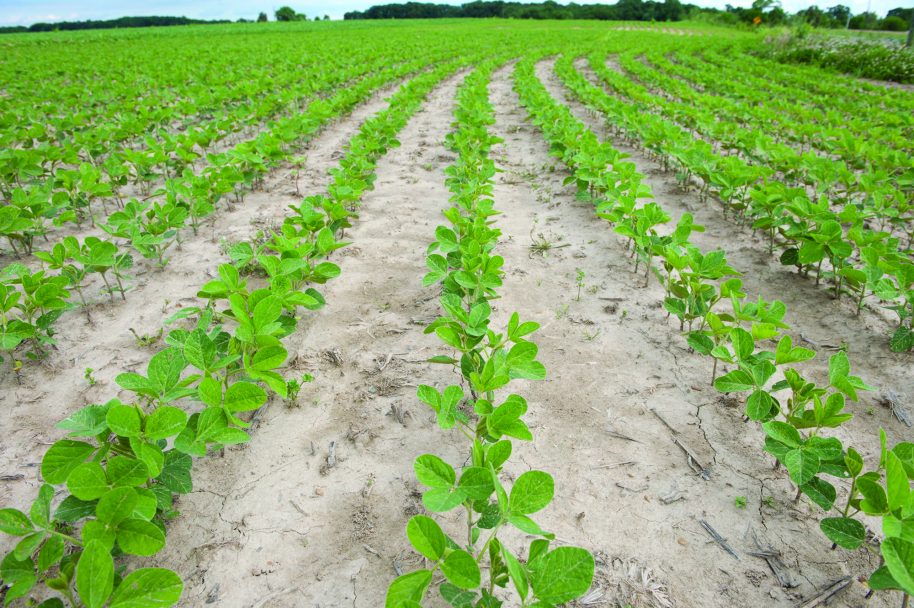 (POOLESVILLE, MARYLAND) – Early July 2017 – It’s been over two weeks without a single drop of rain and the crops are looking thirsty at Stoney Castle Farm.
(POOLESVILLE, MARYLAND) – Early July 2017 – It’s been over two weeks without a single drop of rain and the crops are looking thirsty at Stoney Castle Farm.
Plants wear their feelings on their sleeves, so to speak. After two long hot weeks of Maryland summer sun with no refreshment, the corn twists and rolls its leaves to conserve moisture. The soybean field takes on a dullish cast. Water fills plant cells and – besides being an essential part of photosynthesis – provides the turgor to allow a plant to stand tall.
“We don’t have irrigation,” says Eric Spates, owner of Stoney Castle. “We have to work with nature. We can’t control the weather. We do what we can to work on the soil and make it more productive; we provide a cover crop and plant no-till to conserve moisture; and we choose seeds based on what we think will do well. But in the end we’re at the mercy of nature.”
Nature finally gave him a break last week.
Over 36 hours, over an inch and a half of rain fell over the Montgomery County, Md., farm. “It sounds funny to talk about ‘good rain’ or ‘bad rain.’ This was a good rain,” Spates says. “It fell slow enough to allow it to seep into the soil instead of running off, and it was enough water to make a difference. We’re still in need of more rain, but this helped.”
Maryland farmers plan ahead for when nature provides too much rain, too. Along the edge of one rolling field, Spates has installed a permanent grassed waterway. It’s a natural swale in the landscape that channels water, and in the past had been eroding during rainfall. “I didn’t want to lose soil, so I planted some perennial grasses there. Their roots anchor the soil and the grass blades slow down the flow of water,” he explains. “It takes a little more management, to have a swath of grass in the middle of your field, but it’s worth it.”
Hungry for more? Subscribe to our mailing list and find us on Facebook, Twitter and Instagram.

